INSTITUT SUPERIEUR D'ANTHROPOLOGIE
INSTITUTE OF ANTHROPOLOGY
ONLINE COURSES / COURS A DISTANCE
WINTER TERM : JANUARY 2015
REGISTER NOW
CHINE – 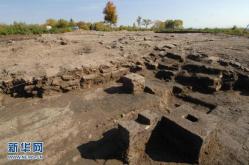 Baoma - Ruins at the foot of Mount Changbai are believed to be a Jin Dynasty (1115-1234) royal temple, archaeologists said on Thursday.The ruins of the town of Baoma, on a hill in Antu County in northeast China's Jilin Province, have been shown to be the oldest temple used by the royal family for worship at the sacred Mount Changbai. The ruins were excavated in August and September. Red peelings from the walls and remnants of painted beams were found on the floor, normally signs of a palace or temple. Hundreds of ceramic building components, iron nails, some porcelain and ironware with the characteristics of the Jin Dynasty were also unearthed. The location and wall length (about 465 meters) of the ruins match the description of the royal temple in Jin records, said Zhao Junjie of research center for Chinese frontier archaeology at Jilin University. Zhao believes the new discovery will help research into the religion, customs and architecture at the time. Archeologists will conduct extensive excavation of the ruins next year.
Baoma - Ruins at the foot of Mount Changbai are believed to be a Jin Dynasty (1115-1234) royal temple, archaeologists said on Thursday.The ruins of the town of Baoma, on a hill in Antu County in northeast China's Jilin Province, have been shown to be the oldest temple used by the royal family for worship at the sacred Mount Changbai. The ruins were excavated in August and September. Red peelings from the walls and remnants of painted beams were found on the floor, normally signs of a palace or temple. Hundreds of ceramic building components, iron nails, some porcelain and ironware with the characteristics of the Jin Dynasty were also unearthed. The location and wall length (about 465 meters) of the ruins match the description of the royal temple in Jin records, said Zhao Junjie of research center for Chinese frontier archaeology at Jilin University. Zhao believes the new discovery will help research into the religion, customs and architecture at the time. Archeologists will conduct extensive excavation of the ruins next year.
http://www.china.org.cn/arts/2014-10/10/content_33720800.htm?
USA –  Rhode Island - A US marine archaeologist leading the search for Captain James Cook's Endeavour says there's an almost 70 per cent chance they will locate the historically important vessel at the bottom of Rhode The archaeologist discovered in an archive search 15 years ago that the Endeavour was likely in Newport Harbour. After the ship's 1768-71 voyage to Australia, Abbass found the vessel was renamed the Lord Sandwich and was one of 13 ships deliberately sunk in Newport Harbour by the British in 1778 during the Revolutionary War to block the French from entering. Abbass and her team have located what they believe could be nine of the 13 ships in water 8m to 15m deep.Silt in the harbour has likely helped preserve the vessels, she said. "Right now, it's 69 per cent," Abbass, when asked what are the chances of finding the Endeavour, replied. "We have now found what looks like nine vessels that are from that period and if it turns out they are all transports, and not something lost about the same time in other activities, then nine out of 13 is 69 per cent." The Australian National Maritime Museum is aiming to find the Endeavour by 2020 - the 250th anniversary of Cook charting the east coast of Australia.
Rhode Island - A US marine archaeologist leading the search for Captain James Cook's Endeavour says there's an almost 70 per cent chance they will locate the historically important vessel at the bottom of Rhode The archaeologist discovered in an archive search 15 years ago that the Endeavour was likely in Newport Harbour. After the ship's 1768-71 voyage to Australia, Abbass found the vessel was renamed the Lord Sandwich and was one of 13 ships deliberately sunk in Newport Harbour by the British in 1778 during the Revolutionary War to block the French from entering. Abbass and her team have located what they believe could be nine of the 13 ships in water 8m to 15m deep.Silt in the harbour has likely helped preserve the vessels, she said. "Right now, it's 69 per cent," Abbass, when asked what are the chances of finding the Endeavour, replied. "We have now found what looks like nine vessels that are from that period and if it turns out they are all transports, and not something lost about the same time in other activities, then nine out of 13 is 69 per cent." The Australian National Maritime Museum is aiming to find the Endeavour by 2020 - the 250th anniversary of Cook charting the east coast of Australia.
https://au.news.yahoo.com/world/a/25228148/us-archaeologist-hopeful-of-endeavour-find/
TURQUIE – 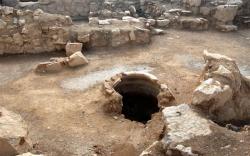 Pisidia Antiocheia - Mass graves that have been discovered at three different points of the ancient city of Pisidia Antiocheia have posed a mystery for experts, who are now examining the 24 skeletons. The site, located in the southern province of Isparta’s Yalvaç district, is considered one of the birthplaces of Christianity. Excavations there last year revealed mass graves in two shafts of a Roman villa that are thought to have been used to keep food. This year another mass grave was found at the site and the bones of 24 people are now being examined by academics from Burdur Mehmet Akif Ersoy University, who have suggested that they died of an epidemic between the sixth and ninth century. The head of the excavations, Professor Mehmet Özhanlı said they could not see the mark of any sharp objects on the bodies. “Probably these people died of an epidemic and the bodies were randomly thrown into cooling shafts and covered with earth and stones. This year we found three more shafts and there was a mass grave in one of them too. We think this was a family of five people, including a child of up to three years old,” Özhanlı said.
Pisidia Antiocheia - Mass graves that have been discovered at three different points of the ancient city of Pisidia Antiocheia have posed a mystery for experts, who are now examining the 24 skeletons. The site, located in the southern province of Isparta’s Yalvaç district, is considered one of the birthplaces of Christianity. Excavations there last year revealed mass graves in two shafts of a Roman villa that are thought to have been used to keep food. This year another mass grave was found at the site and the bones of 24 people are now being examined by academics from Burdur Mehmet Akif Ersoy University, who have suggested that they died of an epidemic between the sixth and ninth century. The head of the excavations, Professor Mehmet Özhanlı said they could not see the mark of any sharp objects on the bodies. “Probably these people died of an epidemic and the bodies were randomly thrown into cooling shafts and covered with earth and stones. This year we found three more shafts and there was a mass grave in one of them too. We think this was a family of five people, including a child of up to three years old,” Özhanlı said.
http://www.hurriyetdailynews.com/mystery-of-mass-graves-in-ancient-roman-village-under-examination.aspx?pageID=238&nid=72797&NewsCatID=375
GRECE – 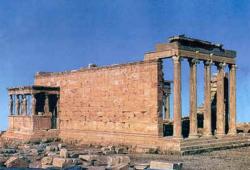 Athènes - The famous Erechtheum of the Athenian Acropolis, renowned for the inclusion of six caryatids in its architectural plan, is about to get a new floor. The renovation, will allow visitors to enter inside the temple, is based on proposals made by the Acropolis Monuments Preservation division and approved by the Central Archaeological Council. The Erechtheum was constructed between 421 and 406 BC. The Ionic-style temple, revered as an outstanding if intriguing example of ancient Greek architecture, was used in antiquity to honor several divinities – among them, Athena, the patron goddess of ancient Athens. A vast extent of the temple’s floor has been destroyed by time, earthquakes, raids, vandalism and excavations. According to project heads, the foundations of the monument will be covered for protection. The process of renovation work will be clearly detailed to show the building’s various construction phases. In antiquity, the area covered by a floor was known as the “Prostomiaion.” According to ancient myths, under the Erechtheum’s Prostomiaion lay the salty water spring that Poseidon offered the Athenians as a prize. The floor plaques will be composed 14-centimeter thick marble, placed over a removable metal construction. The Ottomans used the western part of the northern wall and the monument’s narthex as water reservoirs. These will be visible during renovation.
Athènes - The famous Erechtheum of the Athenian Acropolis, renowned for the inclusion of six caryatids in its architectural plan, is about to get a new floor. The renovation, will allow visitors to enter inside the temple, is based on proposals made by the Acropolis Monuments Preservation division and approved by the Central Archaeological Council. The Erechtheum was constructed between 421 and 406 BC. The Ionic-style temple, revered as an outstanding if intriguing example of ancient Greek architecture, was used in antiquity to honor several divinities – among them, Athena, the patron goddess of ancient Athens. A vast extent of the temple’s floor has been destroyed by time, earthquakes, raids, vandalism and excavations. According to project heads, the foundations of the monument will be covered for protection. The process of renovation work will be clearly detailed to show the building’s various construction phases. In antiquity, the area covered by a floor was known as the “Prostomiaion.” According to ancient myths, under the Erechtheum’s Prostomiaion lay the salty water spring that Poseidon offered the Athenians as a prize. The floor plaques will be composed 14-centimeter thick marble, placed over a removable metal construction. The Ottomans used the western part of the northern wall and the monument’s narthex as water reservoirs. These will be visible during renovation.
http://greece.greekreporter.com/2014/10/10/erechtheum-to-get-a-new-floor/?
GRECE – 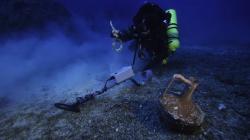 Antikythera - Greece’s Culture Ministry announced the new Antikythera shipwreck discoveries - According to the Ministry, divers have recovered a solid copper spear with a butt cap called a sauroter (Greek for “lizard killer”), which is believed to have been part of a metal or marble sculpture, a copper ring fastened to a copper nail, the lead lower portion of an anchor, a hoop, a copper bedpost, an earthenware vessel and a piece of lead plating from the ship’s hull. A number of amphorae located nearby is raising the question whether they are part of the same ship or not. Archaeologists were able to map the site by combining data from the 1900 salvage operation and Cousteau’s 1976 expedition, producing a 3D representation. The operation will continue by sweeping the area with metal detectors, to get a more accurate view of the shipwreck.
Antikythera - Greece’s Culture Ministry announced the new Antikythera shipwreck discoveries - According to the Ministry, divers have recovered a solid copper spear with a butt cap called a sauroter (Greek for “lizard killer”), which is believed to have been part of a metal or marble sculpture, a copper ring fastened to a copper nail, the lead lower portion of an anchor, a hoop, a copper bedpost, an earthenware vessel and a piece of lead plating from the ship’s hull. A number of amphorae located nearby is raising the question whether they are part of the same ship or not. Archaeologists were able to map the site by combining data from the 1900 salvage operation and Cousteau’s 1976 expedition, producing a 3D representation. The operation will continue by sweeping the area with metal detectors, to get a more accurate view of the shipwreck.
http://greece.greekreporter.com/2014/10/09/greek-culture-ministry-announces-new-antikythera-shipwreck-discoveries/?
TURQUIE – 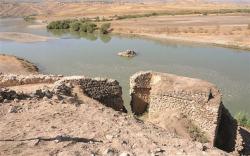 Çattepe - A nearly 1,700-year-old ancient port, located in the eastern province of Siirt’s Çattepe village, will be moved to a cultural park in the new settlement of Hasankeyf, rather than remaining under water at Ilısu Dam. Moving the ancient port, which was excavated in the Çattepe tumulus, at the junction of the Tigris River and the Botan stream, to its new location will be a joint project of the Culture and Tourism Ministry and Ankara University’s Research Center for Maritime Archaeology (ANKÜSAM). ANKÜSAM’s director, Professor Hayat Erkanal, said the reservoir that will be created by Ilısu Dam was too wide, encompassing Diyarbakır, Batman, Şırnak, Siirt and Mardin. “Our goal is to prevent the port from remaining underwater. Boats will be constructed for the ancient port. According to the Assyrian sources, there were five types of river boats in that era. We will construct these five types of boats in İzmir and display them in Hasankeyf. We hope to finish the project this winter.” The head of the Çattepe excavations, Haluk Sağlamtimur, said the ancient port was one of the few rare ports in Anatolia. He explained that it was first constructed as a cistern before turning into a port. “The port will be moved with its original pieces and established there,” he said.
Çattepe - A nearly 1,700-year-old ancient port, located in the eastern province of Siirt’s Çattepe village, will be moved to a cultural park in the new settlement of Hasankeyf, rather than remaining under water at Ilısu Dam. Moving the ancient port, which was excavated in the Çattepe tumulus, at the junction of the Tigris River and the Botan stream, to its new location will be a joint project of the Culture and Tourism Ministry and Ankara University’s Research Center for Maritime Archaeology (ANKÜSAM). ANKÜSAM’s director, Professor Hayat Erkanal, said the reservoir that will be created by Ilısu Dam was too wide, encompassing Diyarbakır, Batman, Şırnak, Siirt and Mardin. “Our goal is to prevent the port from remaining underwater. Boats will be constructed for the ancient port. According to the Assyrian sources, there were five types of river boats in that era. We will construct these five types of boats in İzmir and display them in Hasankeyf. We hope to finish the project this winter.” The head of the Çattepe excavations, Haluk Sağlamtimur, said the ancient port was one of the few rare ports in Anatolia. He explained that it was first constructed as a cistern before turning into a port. “The port will be moved with its original pieces and established there,” he said.
http://www.hurriyetdailynews.com/ancient-port-to-move-to-new-hasankeyf-settlement.aspx?pageID=238&nID=
PAKISTAN –  Peshawar - Peshawar boasts a large collection of historical gardens. The city was billed as Shehr-e-Sabz (the city of greenery) by early visitors and vivid accounts of Peshawar’s gardens are quite popular. However, these gardens have been largely ignored and their history has gradually been forgotten.Neglected by the government, the city’s historical gardens such as Wazir Bagh and Shahi Bagh have not been properly maintained. They have crumbled over time. Located near the University of Peshawar (UoP), Nasir Bagh is considered one of the lost gardens of Peshawar. Two experts have tried to revive interest in Nasir Bagh. Dr Ibrahim Shah, associate professor at the department of archaeology at UoP, and Dr Shah Nazar Khan, former Khyber-Pakhtunkhwa director of archaeology, have conducted a detailed study on the subject. In their research paper titled ‘In quest of Nasir Bagh: a lost garden of the late Mughal period in Peshawar’, they insist the road leads to a ‘pleasure garden’ associated with Nasir Khan II. Nasir Khan II was the governor of Kabul and Peshawar during the reign of Muhammad Shah (1719-49). In 1738, Nadir Shah invaded India. Nasir Khan surrendered to the invaders but remained governor of Kabul and Peshawar. In 1747, Ahmed Shah Abdali seized the reins after Nadir Shah was assassinated and founded modern Afghanistan. Abdali confirmed Nasir’s appointment as governor. However, Nasir’s allegiance to Mughal emperor earned Abdali’s ire and the former was forced to flee. The withdrawal of the governor’s patronage precipitated the garden’s decay. With the arrival of Sikh rulers, the garden was vandalised and eventually forgotten.
Peshawar - Peshawar boasts a large collection of historical gardens. The city was billed as Shehr-e-Sabz (the city of greenery) by early visitors and vivid accounts of Peshawar’s gardens are quite popular. However, these gardens have been largely ignored and their history has gradually been forgotten.Neglected by the government, the city’s historical gardens such as Wazir Bagh and Shahi Bagh have not been properly maintained. They have crumbled over time. Located near the University of Peshawar (UoP), Nasir Bagh is considered one of the lost gardens of Peshawar. Two experts have tried to revive interest in Nasir Bagh. Dr Ibrahim Shah, associate professor at the department of archaeology at UoP, and Dr Shah Nazar Khan, former Khyber-Pakhtunkhwa director of archaeology, have conducted a detailed study on the subject. In their research paper titled ‘In quest of Nasir Bagh: a lost garden of the late Mughal period in Peshawar’, they insist the road leads to a ‘pleasure garden’ associated with Nasir Khan II. Nasir Khan II was the governor of Kabul and Peshawar during the reign of Muhammad Shah (1719-49). In 1738, Nadir Shah invaded India. Nasir Khan surrendered to the invaders but remained governor of Kabul and Peshawar. In 1747, Ahmed Shah Abdali seized the reins after Nadir Shah was assassinated and founded modern Afghanistan. Abdali confirmed Nasir’s appointment as governor. However, Nasir’s allegiance to Mughal emperor earned Abdali’s ire and the former was forced to flee. The withdrawal of the governor’s patronage precipitated the garden’s decay. With the arrival of Sikh rulers, the garden was vandalised and eventually forgotten.
http://tribune.com.pk/story/772402/a-walk-down-peshawars-lost-garden-searching-for-the-forgotten-grandeur-of-nasir-bagh/